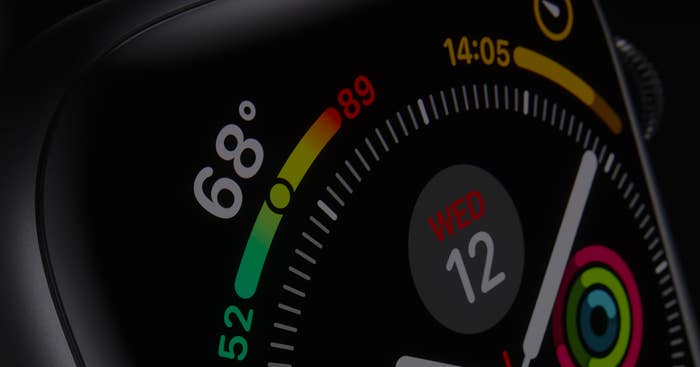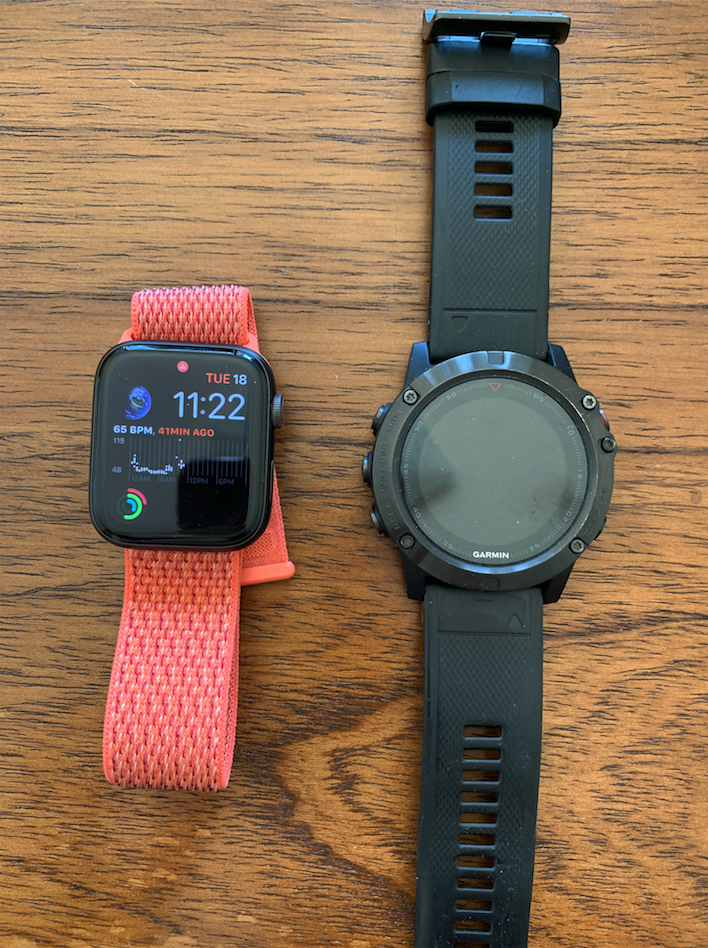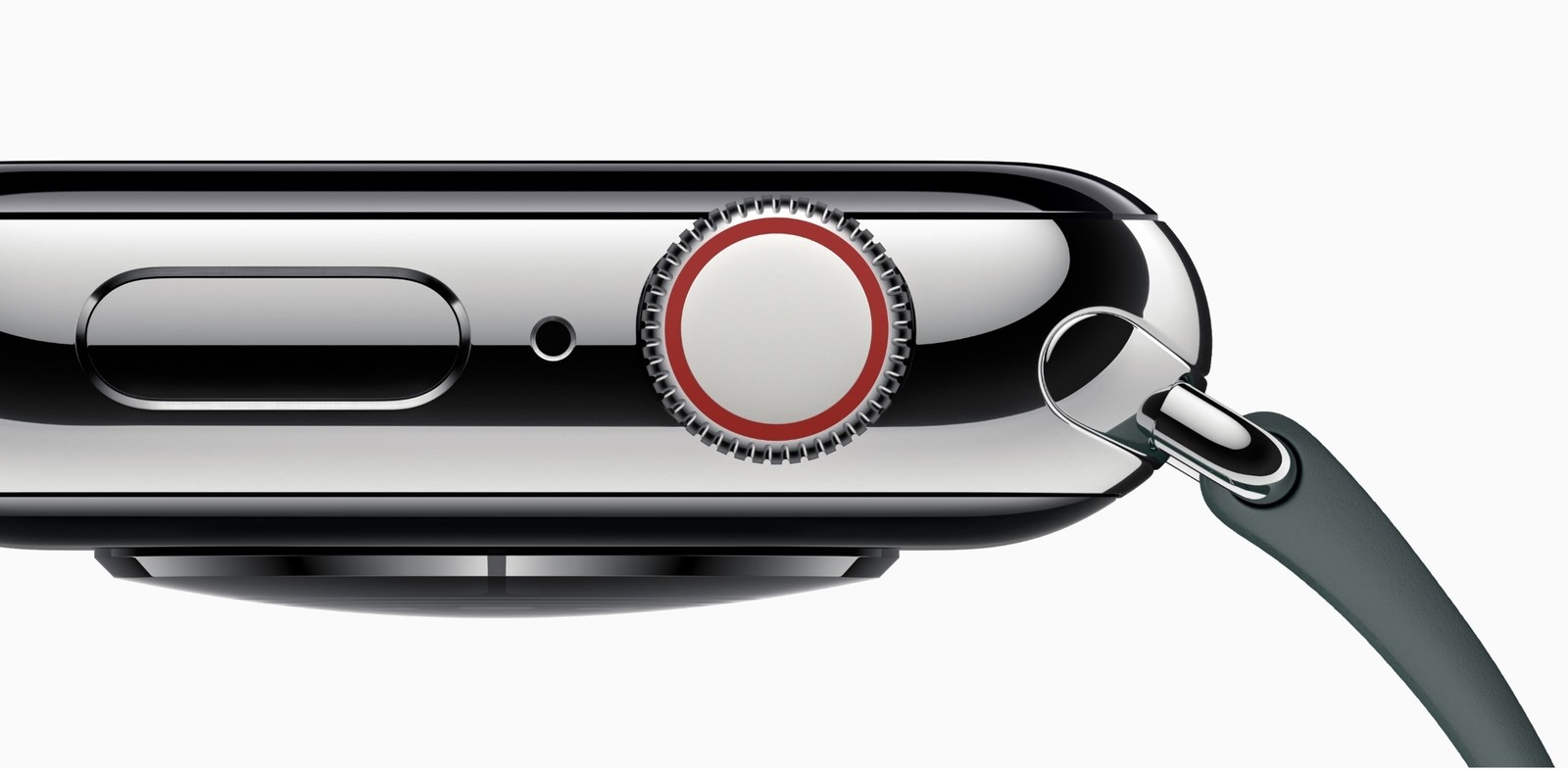
I have a professional obligation to tell you that the new Apple Watch Series 4 is a nice, capable smartwatch. It tells time accurately, tracks your heart rate reliably, and delivers every morsel of information you could possibly desire from the powerful computer in your pocket straight to your wrist. And it's pleasant to look at — like a perfectly polished little skipping stone on your forearm that, if you want it to, gently nudges you to stand up every hour (every damn hour!).
I also have a professional obligation to tell you that I feel a bit silly rehashing the features — 30% bigger screen! Fall detection! A bunch of heart sensors that will show you your own dang electrocardiogram! — and even sillier rendering judgment as to whether you should purchase one. As my colleague wrote yesterday of the new iPhones, the calculus for choosing a new phone is simple now: “Pick the ecosystem you like. Spend what you can afford. Buy the newest device.” This maxim applies quite well to smartwatches too, and the newest Apple Watch is arguably the most elegant, broadly appealing smartwatch out there. But you probably already knew that.
"The newest Apple Watch is arguably the most elegant, broadly appealing smartwatch out there. But you probably already knew that."
Reviewing the new Apple Watch, just like reviewing the latest iPhones, feels mostly fruitless. Despite all its useful bells and whistles, Apple’s watch is less like a fully realized gadget of the future, and more like a transitional device bridging the gap until our computers get so small that they disappear altogether.
I’m not an Apple Watch devotee — after a harrowing experience getting lost in the Alps a year ago, I purchased a hulking Garmin multi-sport smartwatch with GPS to ensure I’ll never find myself cold and afraid on the side of a mountain ever again. A long weekend with the Series 4 didn’t convert me from my current monstrosity, which has 12 days of battery life, topographic maps of every inch of the US, and turn-by-turn directions. But the new Apple device’s sleek, compact design and hyper-high-resolution screen did make me feel pangs of shame for the rugged absolute unit of a Garmin that normally rests atop my wrist.

It was a good reminder that the Apple Watch is a generalist’s gadget. The activity tracker ably logged a few runs with true-to-form rolling mile pace and cadence, and it trudged along on a couple-mile hike up to a lookout point in my town. Battery life — 18 hours, all-day, according to Apple — was sufficient, but a year of the beastly Garmin had spoiled me and made me grumpy about charging it every night. For that reason, dedicated distance runners, backpackers, and long-day hikers will likely find more utilitarian fitness trackers (with multi-day GPS battery life) better suited to their extreme demands.
The Apple Watch is elegantly designed and highly customizable — added screen room means you can fit more complications (aka apps’ info widgets) onto your homescreen. While I definitely don’t need minute-by-minute updates on NFL scores, my resting heart rate, the time in Yangon, Myanmar, and the current wind speed in my zip code all at once, I guess I can appreciate that Apple has made all of that possible with a simple glance. And some of its health features (the electrocardiogram, fall detection, and heart rate monitoring) are legitimately exciting for users who may find comfort in extra-vigilant monitoring. Still, the watch didn’t detect a fall (or much of anything) when I fainted in a doctor’s office after sitting up too fast during an outpatient procedure.
But the flashy bits of the Apple Watch — including its many “dynamic” watch faces that manifest dancing flames to lick the poor hour and minute hands of my timepiece — seem beside the point. The strengths of the Apple Watch are its little features that very quietly drew me away from the tyranny of my phone screen and the gravitational pull of the internet in general.
"In the few days I used the Apple Watch, I frantically pawed at my body, searching for phantom phone vibrations, roughly 35% less."
It’s counterintuitive to suggest that an expensive, internet-connected gadget might help me detach from the internet, but with the right settings, the Watch allowed me to step back slightly. I disabled most alerts from apps, limiting the Watch’s haptic pings to text messages and a few choice notifications for important work stuff. Assured that most essential communications would go to the Watch, I felt free to leave my device on my kitchen table, in my car, or in a jacket pocket without having to return to it. It was far from full freedom, but it was enough to lift part of the heavy mental burden of constant connectivity that many working professionals carry. I’d argue that, in the few days I used the Apple Watch, I frantically pawed at my body, searching for phantom phone vibrations, roughly 35% less. Progress!
Similarly, pairing the Watch with some AirPods, forgetting my phone at home, and working out to music or listening to a podcast while walking my dog felt less like a technological upgrade than it did a bit of sorcery. It felt intuitive and effortless. And for a split second, it made this $399 (GPS)–$499 (GPS + cellular) extravagance feel truly useful and maybe like a peek at the future.
But right now, it only feels like a glimpse. When the Apple Watch debuted in the spring of 2015, the company marketed it as one of its “most personal devices yet,” suggesting that people would use it to offload some of the personal computing we’ve become accustomed to doing on our phones. I reviewed it back then; my gimmick was that I’d use only the Watch for 24 hours — no phone or computer — and see if it was possible to replace the phone with the wrist. My takeaway then: “You can see a plausible future if you squint your eyes just so. That future looks enticing and cool as hell, but it’s just. not. there. Yet.”
A little more than three years later, I largely feel the same way. I can’t seem to shake the notion that the Watch is priming us for a new kind of ambient computing behavior, where all our hardware is barely noticeable but just kind of connects to us — through wireless headphones and little sensors and gyroscopes scattered in everything from hats to glasses to our clothing.

We’re not there yet, but devices like the Apple Watch are getting us closer. Like others I know, I love my Amazon Echo, despite pretty much only using it to play the radio, get the forecast, and set kitchen timers. But the fact that I use 1/100th of its capacity doesn’t negate the satisfaction I get from rudely barking, “ALEXA, WHAT’S THE WEATHER?” as I make coffee each morning. The Apple Watch’s revelatory moments were just as subtle — raising my wrist to change a song or adjust volume while running, or asking Siri to text my partner while holding my dog’s leash in one hand and a cup of coffee in the other. Essentially, it made little moments of my life imperceptibly easier, which is really all I think we should hope to expect of our gadgets as they mature. Similarly, Breathe, the Apple Watch’s minute-long meditation app — which I once dismissed as a throwaway feature — felt profound when used as a reminder to stop, take stock of my day, and reorient myself for a moment. (I did it every hour during the workday and found it wildly helpful.)
All of this these behaviors, of course, are luxuries. And for all its potential utility, that’s what the Apple Watch Series 4 is: a luxury. As such, I’d recommend it most for those who can afford a glimpse at a potential future, rather than those looking for maximum utility in the present.
